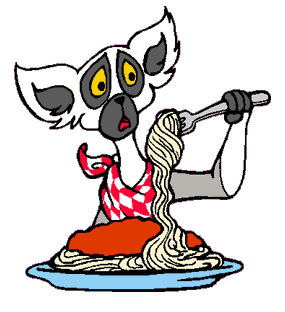
 Remember that polymers are very very long chains.
These long chains:
Remember that polymers are very very long chains.
These long chains:
- can bend and twist and get all tangled up
- can stick to each other
- move much slower because they're so big
Let's see how each of these affects how polymers act.
Polymer Chains Tangle Up
(Chain Entanglement)
The longer a polymer chain is, the more tangled up it can get. Since the chains are harder to pull out or separate, that can make things made out of polymers stronger.
Some polymers are more straight and stiff than others. These won't tangle up as much, but they're strong for a different reason - stiff chains can pack together and stick to each other.
Polymer Chains Stick to Other Polymer Chains
(Summation of Intermolecular Forces):
Think of molecules as being like magnets. Some are like very weak magnets, and some are like strong magnets. So, some can be pulled apart easily, but others take a lot more energy to pull them apart.
Polymer chains are like this too, but remember that they're much much longer than molecules. That means an itty bitty bit of stickiness between molecules can add up to a whole lot of stickiness with polymer chains. When the chains stick together very strongly, it can be really tough to pull them apart.
If the chains happen to be straight and stiff and all lined up next to each other, it can be REALLY hard to pull them apart. A great example is cellulose in wood. The chains lay next to each other, straight and sticky (like strong magnets). That makes trees (and lots of houses!) strong and tall.
Polymer Chains Move Slower than Molecules
(Time Scale of Motion)
Pretend that you're a kindergarten teacher at the park, and you have to take your class from the parking lot to the playground. Now, the fastest way to get them there would be to yell, "Run to the playground, everybody!" What would happen? They'd go wild! Some kids would be fast, some would be slow, and some would run into the woods and never get there!
While that might be crazy and fun for the kids, you do want to make sure that they'll all be safe. What would you do? Have them hold hands, right? Now the kids who want to run might pull forward, and the kids who want to go into the woods might pull sideways, but they'd be held together and just couldn't go as fast. But, they'd all get to the playground! And the faster kids would be held back because they'd be attached to the rest of the group.
We can see this happening when polymers dissolve in a liquid. Those long chains move around so slowly that they make the solution flow much slower. The longer the chains, the slower the flow.
If we measure how long it takes for a polymer solution to flow through a special tube, we can learn more about how big the polymer chains are. If you'd like to read more about measuring the properties of polymers, click here: Observing and Measuring Polymer Properties.
 By the way, the longer it takes to flow, the more viscous (viss-cuss) it is. This property is called viscosity (viss-caw-sit-tee).
By the way, the longer it takes to flow, the more viscous (viss-cuss) it is. This property is called viscosity (viss-caw-sit-tee).

|
Return to Polymer Basics |

|
Return to Main Page |